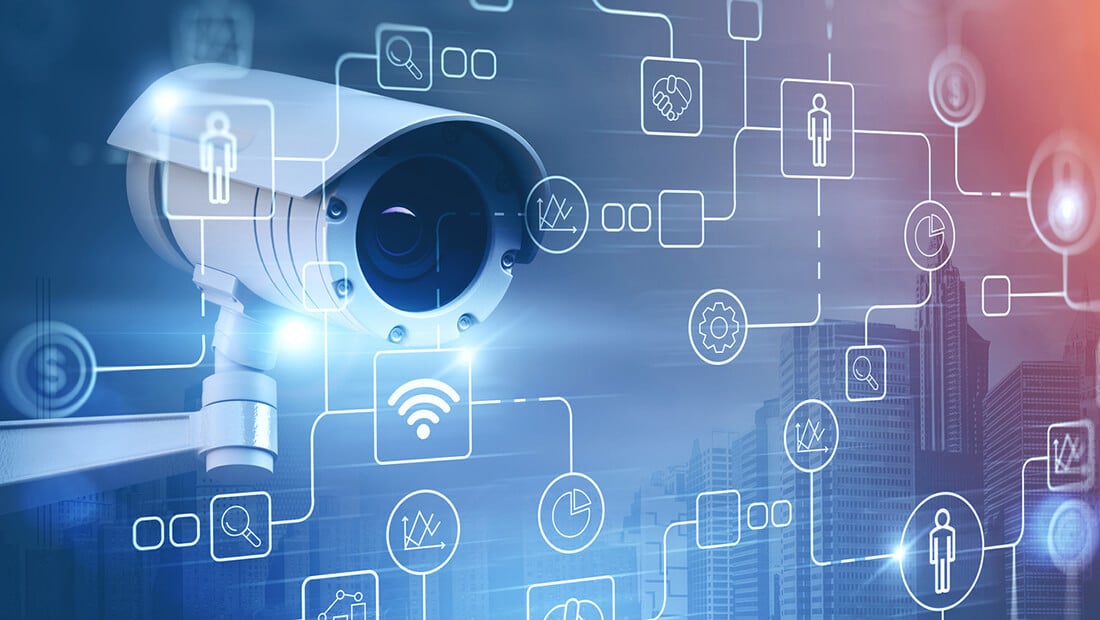Keeping your company safe and secure is essential to its success. An integrated and multi-layered business security system will help your organization protect against theft, vandalism, and unauthorized access.
Let’s explore the diverse world of business security systems so you can help safeguard your organization's future. By understanding the features and functions of each type of system, you will be better equipped to make an informed decision about which security solution is right for your business.
Understanding the Different Security Systems for Business
Protecting assets, employees, and perimeters is a top priority for business leadership teams. 85% of business leaders agree that the physical threat landscape has significantly changed and expanded.
To protect against growing threats, organizations must design an integrated commercial security system that employs various security technologies such as access control and video surveillance.
Here are four critical business security systems you can leverage to protect your team, assets, data, and customers.
1. Access Control Systems
Access control systems allow businesses to regulate and restrict access to sensitive areas such as server rooms, file rooms, executive suites, entry doors, vaults, and more. These security systems for businesses utilize several types of control mechanisms, such as:
- Key fobs
- RFID key cards
- Personal identification numbers (PIN)
- Biometric technology (i.e., fingerprint scanners or facial recognition)
An access control system will verify an individual’s credentials before allowing or denying entry based on predefined permission criteria. Access control improves security by preventing unauthorized access, thus mitigating some of the risks related to theft, espionage, and data breaches.
When selecting an access control system, look for features like audit trails that allow businesses to log and monitor events, as this will simplify regulatory compliance challenges.
2. Thermal Imaging Cameras
Thermal imaging cameras are non-contact mid-infrared devices that track temperature variations in a specific environment. Instead of a traditional camera feed, you see a visual representation of heat patterns. This is known as a thermogram.
Unlike other security camera options, thermal cameras rely on heat emanating from objects rather than visual light — making them useful in low-light environments or complete darkness. Some systems utilize dual-camera overlay technology, allowing the display to show sharp images with precise details that are otherwise not visible on thermal images.
Some typical applications of thermal cameras include:
- Perimeter protection
- Indoor and outdoor fire protection
- Food industry and logistics
- Borders and other security areas
- Plant protection and safety in industrial and manufacturing facilities
When choosing the best thermal camera, review image resolution, long-range detection capabilities, and how your current security system can integrate these new components.
3. Visitor Management Systems (VMS)
Businesses need to keep track of daily visitors at a physical location. A dedicated staff member often accomplished this task in the past, using traditional paper-based record-keeping methods.
Visitor management systems (VMS) digitize and streamline the guest intake process by using electronic registration to capture a visitor’s information, like names, contact information, and the purpose of their visit. A VMS can provide visitor badges or other temporary access credentials.
After initial registration, a visitor management system can track visitor movement within the facility and maintain a digital record of all visits for security and compliance purposes. Visitor management systems are well-suited for many different types of environments including office buildings, hospitals, and educational facilities.
Next-generation visitor management systems like ALICE can perform numerous reception tasks:
- Greet and familiarize visitors with introduction screens
- Print visitor badges
- Allow for self-check-in for guests
- Provide directions and offer visual aids for visitors
- Coordinate and pre-schedule visitor arrivals
- Offer visitors introductory materials like documents or videos for guest orientation
- Keep precise time logs of visitors' arrivals and departures
When evaluating visitor management systems, always search for standout features like pre-registration capabilities, the ability to automatically notify employees of relevant visitors, and customized options to meet your business's specific security needs.
Related Resource
7 Reasons to Use a Visitor Management System
Explore the top reasons your businesses should leverage the power of a fully digital VMS for guest intake.Learn More →
4. Video Surveillance Systems
A video surveillance system is the preferred security solution for real-time monitoring and evidence gathering. Modern surveillance systems use Internet Protocol (IP) technology to transmit digital data.
IP cameras connect to a network via a powered ethernet cable called power over the internet (PoE) connected to a network video recorder (NVR). Older systems leverage analog coaxial technology. While these systems tend to be cheaper, they lack IP systems' resolution and distance benefits.
IP cameras come in many different types, including both indoor and outdoor options:
- Dome cameras
- Pan tilt zoom cameras (PTZ)
- Bullet cameras
- Automatic number plate recognition cameras (ANPR)
Commercial video surveillance systems are the preferred choice for many surveillance applications, including perimeter security of a property and even the indoor monitoring of lobbies, hallways, or other sensitive areas. Modern systems usually record in high resolution (4K+), giving security teams enhanced imaging capabilities.
The right video surveillance system will leverage several different camera types, including specialty ones like infrared or night vision. Cameras should be both discrete and noticeable. Placing cameras in conspicuous areas can help deter potential theft.
Securing Your Business: Choosing the Right Security System
A comprehensive, integrated business security system will leverage several technologies. By combining visitor management, video surveillance, access control, and thermal imaging technology, organizations can create holistic security solutions to meet specific business needs.
Are you interested in commercial security systems? Get in touch to learn how your company can stay safe with robust and reliable security solutions.




